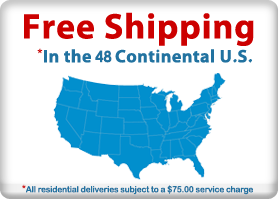Get Your Transmission
Get the best prices online from our large selection of Used, Rebuilt, Engines and Transmissions.


Transmission Articles:
- Acura Transmissions
- Audi Transmissions
- BMW Transmissions
- Buick Transmissions
- Cadillac Transmissions
- Chevrolet Transmissions
- Chrysler Transmissions
- Dodge Transmissions
- Ford Transmissions
- GMC Transmissions
- Honda Transmissions
- Hummer Transmissions
- Hyundai Transmissions
- Infiniti Transmissions
- Isuzu Transmissions
- Jaguar Transmissions
- Jeep Transmissions
- Kia Transmissions
- Land Rover Transmissions
- Lexus Transmissions
- Lincoln Transmissions
- Mazda Transmissions
- Mercedes Transmissions
- Mercury Transmissions
- MINI Transmissions
- Mitsubishi Transmissions
- Nissan Transmissions
- Oldsmobile Transmissions
- Plymouth Transmissions
- Pontiac Transmissions
- Porsche Transmissions
- Saab Transmissions
- Saturn Transmissions
- Scion Transmissions
- Subaru Transmissions
- Suzuki Transmissions
- Toyota Transmissions
- Volkswagen Transmissions
- Volvo Transmissions
- 4-speed Transmissions
- 5-speed Transmissions
- 6-speed Transmissions
- Automatic Transmissions
- Manual Transmissions
- Used Transmissions
Engine and Transmission Installation Guides
**We highly recommend you use an ASE certified mechanic for your installation.
(ASE Certified Mechanics Are Available Through Our Network of Suppliers to Answer Your Questions)
ENGINES - All engines sold under the used category must meet the following requirements to qualify for the supplier warranty. All warranties extended by the supplier are subject to terms and conditions of that supplier, NOT GotTransmissions.com. Used engines are understood to consist of a short block assembly and cylinder heads ONLY. Any other parts left on the used engine at the time of sale are included for possible customer convenience, but are not required to be sent by GotTransmissions.com or any given supplier. Those items may be used at the customer's discretion but they are not covered by any warranty of any type. The installer should transfer all components from the original engine to this replacement engine. Any components known to be inoperable need to be replaced. Any previous issues that caused this replacement must be fixed prior to installation of this replacement engine.
Checklist:
1. New water pump, timing belt/chain, front and rear main seals on used and reconditioned engines must be installed.
2. Oil strainer and pick up screen must be cleaned or replaced prior to installation.
3. Thoroughly clean all units such as oil pan, timing cover, rocker arm covers, intake manifold and any other parts that may need cleaning before reassembling.
4. Replace oil filter and oil.
5. Replace tune-up items such as plugs, cap, rotor, fuel and air filter, pcv valve, and other parts specific to the engine.
6. Check and adjust valves and timing to factory specifications.
7. Replace thermostat and test cooling system.
8. Fuel lines should be checked for debris and flow.
9. Inspect wire harness for broken wires or insulation damage.
10. Always remember to prime oil pump and oil lines.
11. Change your oil and filter after the first 500 miles and every 3000 miles thereafter.
12. Catalytic converter must be inspected to make sure it is not clogged. A defective converter can cause damage to piston rings and internal bearings.
13. Check all cooling components such as hoses, freeze plugs, radiator and coolant. Radiator should be cleaned or replaced.
14. Blow out intake ports to remove any loose particles that may fall into cylinder head and cause damage.
15. Replace all seals and gaskets regardless of condition. These include but are not limited to valve cover, oil pan, intake and exhaust manifolds, and timing cover. Seal or gasket failure is not covered under basic warranty. Damage caused by seal or gasket failure is not covered.
Engine Start-Up Procedure:
1. Remove all spark plugs
2. Remove oil sending unit switch.
3. Crank the engine until oil comes out oil sending unit switch hole.
4. If oil won't come out, spray the oil sending unit switch hole with oil or penetrating lubricant to prevent dry start.
5. After oil comes out, replace oil sending unit switch and crank engine for 1 to 2 minutes, until oil pressure is normal.
6. Replace spark plugs and then start engine. Do not accelerate above idle until normal oil pressure is reached.
Note:
1. After starting, cylinder head must be re-torqued and valves re-adjusted to manufacturer's specifications after the engine reaches normal operation temperature and once again at 500 miles.
2. Oil and filter must be changed before start up and again after 500 miles and every 3000 miles thereafter. Receipts for lubricants, filters and service may be required. Failure to perform these operations voids warranty.
3. Follow the periodic maintenance as set forth by manufacturer's specifications to keep your warranty in-tact.
TRANSMISSIONS - All transmissions sold under the used category must meet the following requirements to qualify for the supplier warranty. All warranties extended by the supplier are subject to terms and conditions of that supplier, not GotTransmissions.com. Any previous issues that caused this replacement must be fixed prior to installation of this replacement transmission.
- Completely flush system. **Some transmissions require precise fluid type and flush procedure to prevent damage or contamination.**
- Thoroughly clean all units such as fluid pan and any other parts that need cleaning before assembly.
- For an automatic transmission, you must install a new oil cooler, new filter kit and new oil.
- Replace fluid and check level for a standard transmission.
- Replace front and rear seals.
- Check all lines and linkage for damage or blockage. Adjust linkage and cables to ensure proper shifting and operation of clearance.
- Torque converter must be replaced. If a torque converter was shipped with the transmission, it is ONLY to protect it during shipping. Make sure it is properly aligned in the pump assembly and filled with fluid prior to start up.
- External sensors and electrical parts and operations are customer responsibility at installation. This includes coding and flashing if required.
